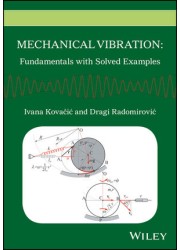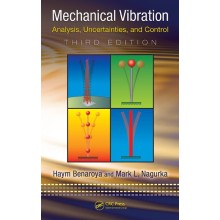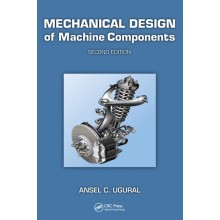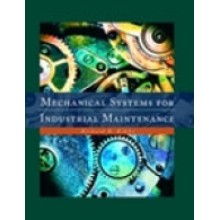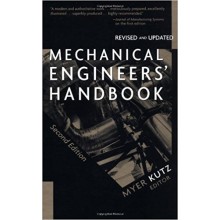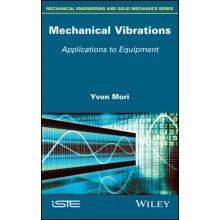Mechanical Vibration: Fundamentals with Solved Examples
ISBN: 9781118675151
Author: Ivana Kovacic, Dragi Radomirovic
Dispatch Time: 15 - 30 Days
Quantity:
-
Add to Compare
Mechanical oscillators in Lagrange's formalism – a thorough problem-solved approach
This book takes a logically organized, clear and thorough problem-solved approach at instructing the reader in the application of Lagrange's formalism to derive mathematical models for mechanical oscillatory systems, while laying a foundation for vibration engineering analyses and design.
Each chapter contains brief introductory theory portions, followed by a large number of fully solved examples. These problems, inherent in the design and analysis of mechanical systems and engineering structures, are characterised by a complexity and originality that is rarely found in textbooks.
Numerous pedagogical features, explanations and unique techniques that stem from the authors’ extensive teaching and research experience are included in the text in order to aid the reader with comprehension and retention. The book is rich visually, including numerous original figures with high-standard sketches and illustrations of mechanisms.
1 Preliminaries 1
Chapter Outline 1
Chapter Objectives 1
1.1 From Statics 1
1.1.1 Mechanical Systems and Equilibrium Equations 1
1.1.2 Constraints and Free-Body Diagrams 1
1.1.3 Equilibrium Condition Via Virtual Work 2
1.2 From Kinematics 4
1.2.1 Kinematics of Particles 4
1.2.2 Kinematics of Rigid Bodies 5
1.2.3 Kinematics of Particles in Compound Motion 7
1.3 From Kinetics 8
1.3.1 Kinetics of Particles 8
1.3.2 Kinetics of Rigid Bodies 9
1.4 From Strength of Materials 13
1.4.1 Axial Loading 13
1.4.2 Torsion 14
1.4.3 Bending 14
2 Lagrange’s Equation for Mechanical Oscillatory Systems 17
Chapter Outline 17
Chapter Objectives 17
2.1 About Lagrange’s Equation of the Second Kind 17
2.2 Kinetic Energy in Mechanical Oscillatory Systems 19
2.3 Potential Energy in Mechanical Oscillatory Systems 21
2.3.1 Gravitational Potential Energy 22
2.3.2 Potential Energy of a Spring (Elastic Potential Energy) 24
2.4 Generalised Forces in Mechanical Oscillatory Systems 27
2.5 Dissipative Function in Mechanical Oscillatory Systems 28
References 30
3 Free Undamped Vibration of Single-Degree-of-Freedom Systems 31
Chapter Outline 31
Chapter Objectives 31
Theoretical Introduction 31
4 Free Damped Vibration of Single-Degree-of-Freedom Systems 67
Chapter Outline 67
Chapter Objectives 67
Theoretical Introduction 67
5 Forced Vibration of Single-Degree-of-Freedom Systems 101
Chapter Outline 101
Chapter Objectives 101
Theoretical Introduction 101
6 Free Undamped Vibration of Two-Degree-of-Freedom Systems 127
Chapter Outline 127
Chapter Objectives 127
Theoretical Introduction 127
7 Forced Vibration of Two-Degree-of-Freedom Systems 153
Chapter Outline 153
Chapter Objectives 153
Theoretical Introduction 153
8 Vibration of Systems with Infinite Number of Degrees of Freedom 183
Chapter Outline 183
Chapter Objectives 183
8.1 Theoretical Introduction: Longitudinal Vibration of Bars 183
8.2 Theoretical Introduction: Torsional Vibration of Shafts 197
8.3 Theoretical Introduction: Transversal Vibration of Beams 207
9 Additional Topics 225
Chapter Outline 225
Chapter Objectives 225
9.1 Theoretical Introduction 225
9.2 Equivalent Two-Element System for Concurrent Springs and Dampers 226
9.2.1 Concurrent Springs 227
9.2.2 Concurrent Dampers 231
9.3 Nonlinear Springs in Series 238
9.3.1 Purely Nonlinear Springs in Series 239
9.3.2 Equal Duffing Springs in Series 239
9.3.3 Two Different Nonlinear Springs 240
9.4 On the Deflection and Potential Energy of Nonlinear Springs: Approximate Expressions 242
9.4.1 Duffing-Type Spring Deformed in the Static Equilibrium Position 242
9.4.2 Duffing-Type Spring Undeformed in the Static Equilibrium Position 242
9.5 Corrections of Stiffness Properties of Certain Oscillatory Systems 244
9.5.1 One-Degree-of-Freedom Systems 245
9.5.2 Two-Degree-of-Freedom Systems 248
Appendix: Mathematical Topics 255
A.1 Geometry 255
A.2 Trigonometry 257
A.3 Algebra 258
A.4 Vectors 258
A.5 Derivatives 259
A.6 Variation (Virtual Displacements) 260
A.7 Series 260
Write a review
Your Name:Your Review: Note: HTML is not translated!
Rating: Bad Good
Enter the code in the box below:
Copyright © 2014 Engineering Standards Bureau. All Rights Reserved.
Developed By Zoom Into Web


